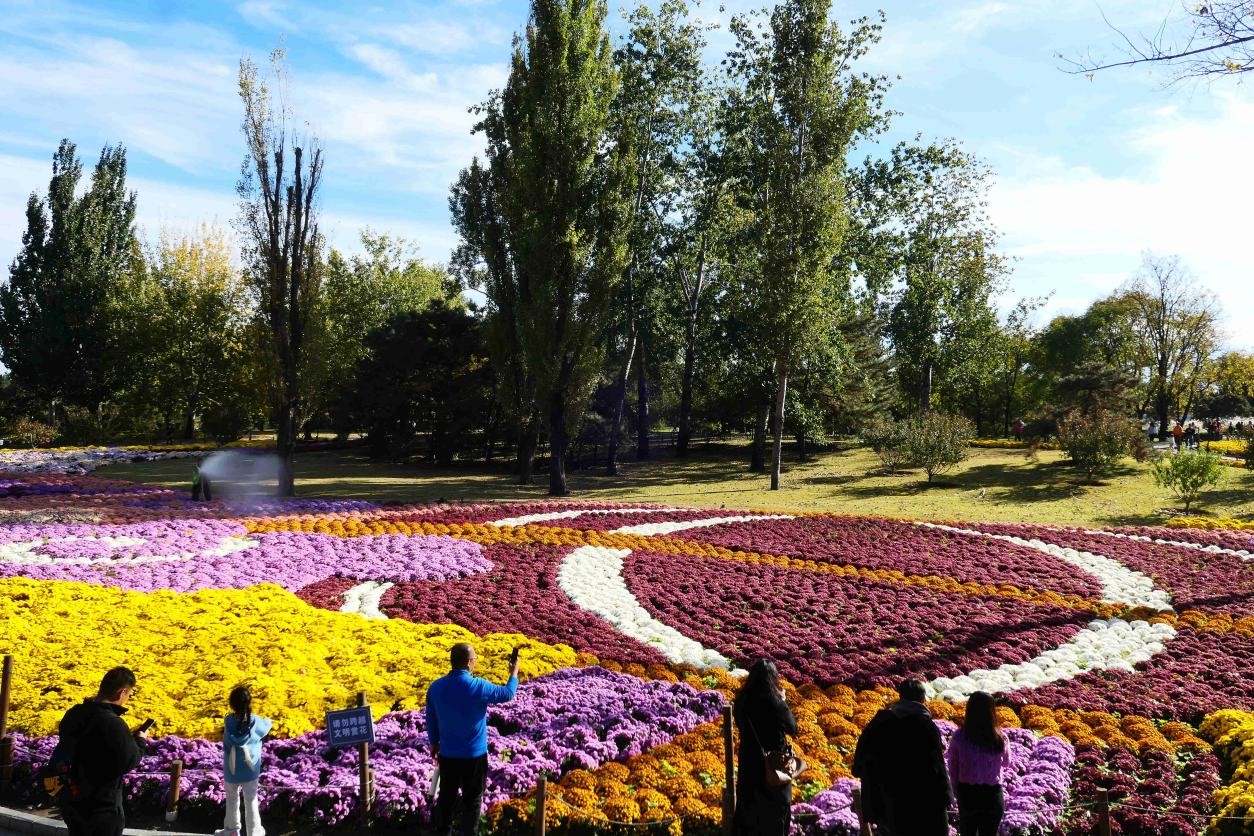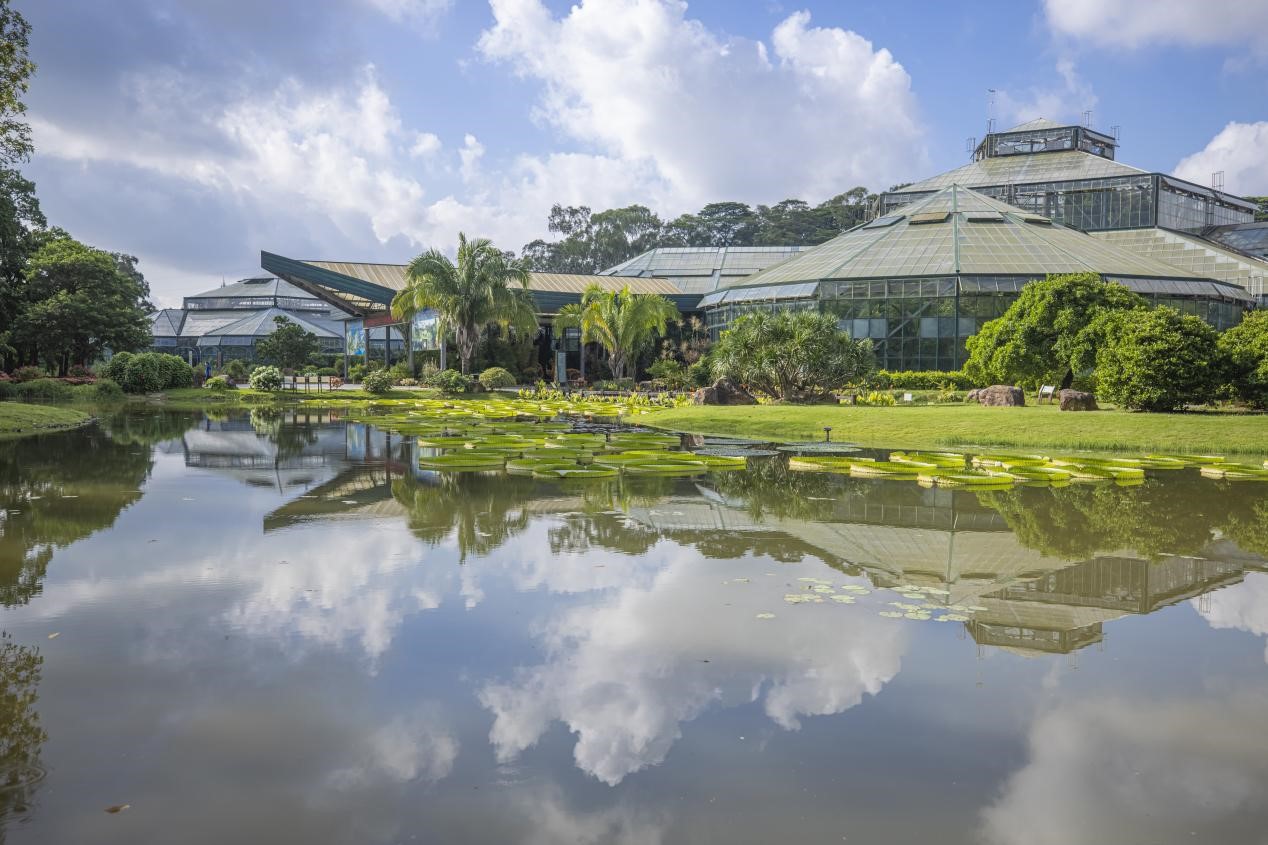China strives to safeguard beauty of biodiversity

Photo shows the China National Botanical Garden in Beijing. (People's Daily Online/Song Jiaru)
As the China National Botanical Garden approaches its third anniversary, it continues to attract a large number of visitors who are eager to explore its beauty.
The newly introduced wintersweet blossoms quietly. The thriving wetland ecosystem offers abundant food and ideal habitats for migratory birds to overwinter, rest, and breed. Meanwhile, a plant museum, themed "plants and life," showcases the extensive applications of plants in daily life from multiple perspectives.
Biodiversity concerns the wellbeing of humanity and is a crucial foundation for human survival and development.
The China National Botanical Garden and the South China National Botanical Garden are research bases and educational platforms for national biodiversity conservation. They signify a solid step forward in the construction of China's national botanical garden system.
This development holds significant importance in advancing natural ecological conservation, building a beautiful China, and promoting harmonious coexistence between man and nature.
The primary motivation for visiting a botanical garden is to experience the beauty of nature. However, the role of the national botanical garden system is not only to showcase nature, but also to protect species.
China is one of the countries with the richest diversity of wild plant species, with over 4,000 rare and endangered wild plant species, about 1,200 of which are listed in the List of National Key Protected Wild Plants.

Tourists visit the China National Botanical Garden in Beijing. (People's Daily Online/Fan Jiashan)
Through facilities such as specialized gardens, herbariums, germplasm resource banks, and laboratories, systematic collection, complete protection, high-level research, and sustainable utilization of plant groups are carried out, which helps protect rare species, safeguard ecological security, and promote the realization of the value of ecological products.
The China National Botanical Garden alone is home to over 17,500 species of ex-situ plants - those transferred from their habitat.
Building germplasm resource banks is key to biodiversity conservation. Take the China National Botanical Garden's "national plant germplasm resource bank" project as an example. Scientific workers have conducted surveys on wild plant resources in 12 provinces and municipalities, collecting germplasm resources of wild plants including amur cork tree, wild soybean, amur linden, and lonicera oblata, which are rare and endangered.
A single species can have a significant impact on the national economy, while a single seed has the potential to bring benefits to the people. Plant germplasm resource banks constitute the main component of species diversity and genetic diversity. Preserving and passing down excellent plant genes not only benefits the present but also future generations.
Protecting the ecological environment and biodiversity is a cause that needs to be jointly participated, developed and shared by the entire population.
An action plan on biodiversity conservation for the period between 2023 and 2030 released by the Ministry of Ecology and Environment emphasized the importance of engaging all individuals in conservation efforts as a key priority.
Creating a long-term mechanism for biodiversity conservation, spearheaded by the government, with active involvement from businesses, and broad participation from the public, is essential for integrating biodiversity into mainstream practices and enhancing governance capabilities.

Photo shows the South China National Botanical Garden in Guangzhou, south China's Guangdong province. (People's Daily Online/Fu Haiyan)
The principle that everyone is responsible for environmental protection is not just an empty phrase; it requires each individual to make a meaningful contribution.
As more and more botanical gardens are gaining fame on the internet, they have become integrated natural education centers shared by urban and rural areas, inspiring people's love and sense of responsibility towards nature.
Since 2023, the China National Botanical Garden has hosted a total of 60 lectures on human-nature harmony, in which experts and scholars were invited to share scientific knowledge, classic theories, and major discoveries in an accessible manner.
By spreading the concept of biodiversity conservation to households across the nation, enhancing the biodiversity literacy of the entire population, and advancing conservation efforts by the public, significant progress has been made.
Globally, the loss of biodiversity and ecosystem degradation pose significant risks to human survival and development. Nature cannot wait, and neither can humanity. As one of the earliest signatories of the UN Convention on Biological Diversity, China has played a crucial leading role in global biodiversity conservation efforts.
The national botanical garden system is not isolated but works in conjunction with a national park-based system of protected areas. Through integrated planning for in-situ and ex-situ conservation, China's biodiversity conservation capabilities are significantly strengthened, contributing to a new level of global biodiversity governance.
A civilization may thrive if its natural surroundings thrive. A vivid scroll depicting the harmonious coexistence of man and nature unfolds gently across the vast land of China, contributing more efforts to building a clean and beautiful world and building a community of life for man and nature.
Photos
Related Stories
Copyright © 2025 People's Daily Online. All Rights Reserved.









